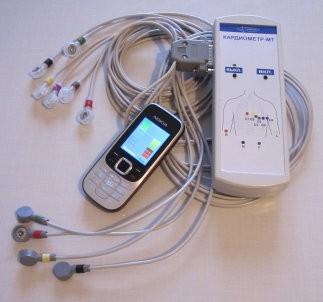What is Ambulatory Electrocardiography?
Ambulatory electrocardiography, also known as Holter monitoring, is a technique for performing electrocardiography (ECG or EKG) on patients for an extended period - typically 24 hours or more. With this procedure, an ECG device is attached to a patient that records the electrical activity and rhythms of the heart over time as the patient goes about their daily activities. This allows doctors to detect heart conditions that may not be apparent during routine or shorter ECG tests.
The Procedure and How it Works
For an ambulatory ECG test, ECG electrodes are attached to the patient's chest and connected by wires to a small portable recorder. This recorder digitally stores the continuous ECG data. Modern Holter monitors are wireless and can transmit data remotely during the monitoring period. Patients are sent home or to work with the recorder and go about their normal daily routine. It's important that patients keep a diary of activities and symptoms during the monitoring period to correlate with any cardiac events recorded. After 24-48 hours, the patient returns the recorder and a doctor analyzes the downloaded ECG data.
How it Aids Diagnosis
Standard ECG tests in a clinic provide a snapshot of cardiac function at a single moment in time. However, many heart conditions are intermittent or only occur during certain physical activities. Ambulatory Electrocardiography a small recording unit worn on a waist belt or strap. During the monitoring period, patients are instructed to go about their normal daily activities and keep a diary of any symptoms experienced .This extended data capture makes it possible to detect abnormalities that may not show up during shorter tests, such as abnormal heartbeats (arrhythmias), fluctuations in heart rate associated with certain conditions, and heart blockages. The test can help diagnose conditions like atrial fibrillation, heart block, long QT syndrome, and help determine if dizzy spells or fainting are caused by cardiac issues.
Advantages Over In-Clinic Testing
As well as detecting intermittent issues, ambulatory ECG provides crucial context that aids diagnosis. Doctors can see how the heart responds to different activities, stresses, and symptoms thanks to the diary information. Issues may only surface during exercise or sleep, for example. Furthermore, Holter monitoring is less disruptive for patients than multi-day hospital stays for cardiac testing. This makes it easier to catch and diagnose problems like arrhythmias that come and go. The procedure is also usually more cost-effective compared to prolonged in-patient monitoring.
New Technologies Expanding Capabilities
Modern ambulatory ECG devices use enhanced hardware and algorithms to pick up more subtle abnormalities compared to early Holter monitors. Wireless capabilities allow for remote data transmission during monitoring. Some advanced systems can automatically detect and flag abnormal heartbeats for easier analysis. Artificial intelligence is now being applied as well, with AI algorithms learning to recognize patterns and flag potentially concerning events faster than human review alone. Continuous remote monitoring is now even possible using smartwatch or chest patch formats. This removes the need for returning a physical recorder and opens up the possibility of extended or lifetime monitoring in some cases.
Future Applications and Research Areas
With further engineering and clinical validation, ambulatory ECG technology has exciting potential applications. Long term chronic disease management and prevention may be enabled by products allowing lifetime continuous or intermittent remote ECG tracking. Early detection of asymptomatic but potentially serious issues could improve patient outcomes. Devices may one day be able to automatically alert doctors and emergency services if dangerous arrhythmias are detected during monitoring periods. Implantable long term monitors under research could spot issues before complications even cause symptoms. Ambulatory ECG also shows promise for clinical drug and device trials by allowing continuous assessment of cardiac impacts during daily life. Overall, advancements in this field are helping transform cardiac care through ever more accessible, accurate and long term heart monitoring options.
Learn more insights straight from the source
Understanding Ambulatory Electrocardiography: What It Is and How It Works
Understanding Ambulatory Electrocardiography Testing
Preparing for Ambulatory Electrocardiography: A Patient’s Guide
Ambulatory Electrocardiography: A Detailed Review
About Author:
Vaagisha brings over three years of expertise as a content editor in the market research domain. Originally a creative writer, she discovered her passion for editing, combining her flair for writing with a meticulous eye for detail. Her ability to craft and refine compelling content makes her an invaluable asset in delivering polished and engaging write-ups.
(LinkedIn: https://www.linkedin.com/in/vaagisha-singh-8080b91)

